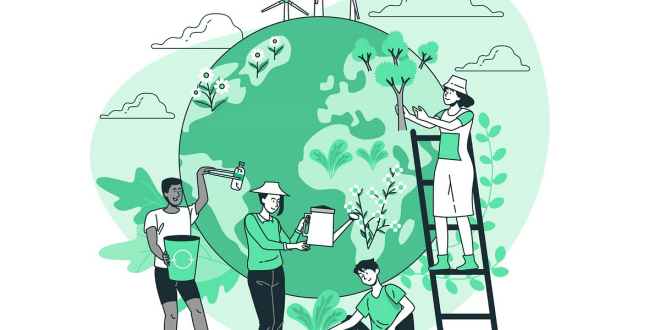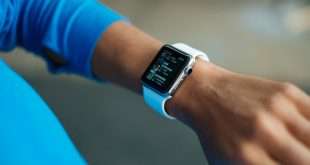In the ever-evolving world of design, sustainable practices have taken center stage. Today, we delve into the realm of wireframing and prototyping, exploring the comprehensive guide to integrating eco-friendly materials into these crucial design processes. With a strong focus on reducing environmental impact, designers and businesses alike are embracing innovative approaches to create sustainable solutions that pave the way for a greener future.
Understanding Sustainable Design
Sustainable design is not just a fleeting trend; it is a philosophy that prioritizes minimizing negative environmental impacts while maximizing the benefits of design solutions. It involves thoughtful consideration of materials, manufacturing processes, and end-of-life management. Adopting sustainable practices in wireframing and prototyping allows designers to reduce waste, conserve resources, and contribute positively to the planet.
The Eco-Friendly Wireframing Revolution
Wireframes are the blueprint of any design project, and choosing eco-friendly materials can make a significant difference. Designers now have access to a wide array of sustainable options, such as recycled paper, plant-based plastics, and even biodegradable alternatives. These materials not only reduce the carbon footprint but also maintain the efficiency and functionality required for successful wireframing.
Prototyping with a Green Mindset
Prototyping is a crucial step in the design process, allowing designers to test and refine their ideas. Embracing sustainable materials for prototyping, such as bamboo, cork, or bioplastics, showcases a commitment to eco-conscious design without compromising on aesthetics or usability. Moreover, sustainable prototyping often leads to cost savings and improved long-term viability.
Exploring Eco-Friendly Wireframing Tools
In the age of technology, wireframing tools play a vital role in design projects. Fortunately, several software and applications have recognized the importance of sustainability and integrated eco-friendly features. From platforms that promote paperless collaboration to those that offer energy-efficient interfaces, designers now have the option to make greener choices while wireframing.
Biomimicry: Nature as the Ultimate Design Inspiration
Biomimicry is a design approach that draws inspiration from nature’s time-tested solutions. By mimicking natural processes and structures, designers can create highly efficient and sustainable wireframes and prototypes. Taking cues from nature’s brilliance allows for innovative and eco-friendly designs that seamlessly blend form and function.
Social Impact of Sustainable Design
Sustainable design goes beyond ecological concerns; it also addresses social impact. By incorporating eco-friendly practices in wireframing and prototyping, designers can contribute to communities, promote fair labor practices, and support local artisans. This aspect of sustainability enhances the overall positive influence of a design project.
Case Studies: Wireframing and Prototyping Success Stories
Real-world examples provide valuable insights into the effectiveness of sustainable wireframing and prototyping. From large corporations to small startups, businesses have witnessed cost savings, brand value enhancement, and improved customer perception by adopting eco-friendly design practices. These case studies showcase the transformative power of sustainable design.
Addressing Challenges in Eco-Friendly Design
Despite the numerous benefits, eco-friendly wireframing and prototyping may present challenges. Limited availability of sustainable materials, higher initial costs, and potential resistance to change are some of the obstacles designers may face. However, with increasing awareness and technological advancements, these challenges are being effectively addressed.
Embracing Circular Design Principles
Circular design is an approach that aims to minimize waste by designing products and systems with a focus on longevity, repairability, and recyclability. Integrating circular design principles into wireframing and prototyping ensures that the end products have a sustainable life cycle, reducing the burden on the environment.
Final Words
In conclusion, sustainable design practices are revolutionizing the world of wireframing and prototyping. By choosing eco-friendly materials, embracing biomimicry, and adopting circular design principles, designers can create innovative and environmentally responsible solutions. Beyond reducing their ecological footprint, sustainable design also fosters positive social impact and enhances brand value. As the industry moves towards a more eco-conscious future, the power to transform wireframing and prototyping for good lies in our hands.
Commonly Asked Questions
Q1: What are the key benefits of using eco-friendly materials in wireframing?
A: Using eco-friendly materials in wireframing reduces environmental impact, promotes sustainability, and demonstrates a commitment to responsible design.
Q2: Can sustainable prototyping be cost-effective for businesses?
A: Yes, sustainable prototyping often leads to cost savings in the long run due to reduced waste and resource usage.
Q3: How can biomimicry influence wireframe and prototype design?
A: Biomimicry draws inspiration from nature’s designs, leading to innovative and efficient solutions in wireframing and prototyping.
Q4: Are there any successful businesses that have embraced eco-friendly wireframing?
A: Yes, several businesses have experienced positive outcomes by adopting eco-friendly design practices, which have enhanced brand value and customer perception.
Q5: What challenges might designers face in implementing eco-friendly wireframing?
A: Designers may encounter challenges such as limited material availability, higher initial costs, and resistance to change. However, these challenges can be overcome with awareness and technological advancements.
 webfily
webfily



